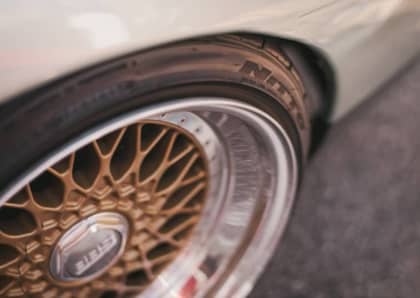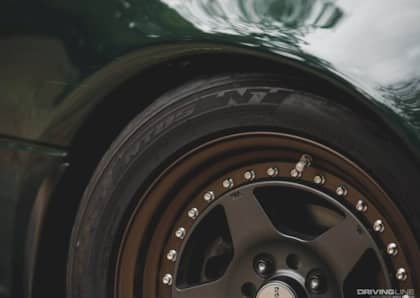Swaybars Are The Most Cost-Effective Suspension Mod You Can Make: Here's How They Work
Upgrading your vehicle's suspension can sometimes feel like a deep rabbit hole in terms of cost and options. With so many different components that can be modified, it's helpful to know which areas of improvement will give you the best return on your investment in terms of performance you can instantly feel from behind the wheel.

Sway bar upgrades are a definite win in this category. Designed to limit body roll, sway bars (also called anti-roll bars) can not only improve your car or truck's control through a corner, but they can also tune its characteristics to match the handling profile you're looking for when driving at speed—and do it all at a very affordable price.
How Do Sway Bars Work?
At its most basic, a sway bar is a metal bar (usually formed in a loose 'U' shape' and mounted laterally across the chassis), that manages weight transfer from one side to the other when a vehicle changes direction.

From a physics perspective, a sway bar is a torsional spring, which means that when it's twisted it doesn't bend but stays as 'flat' as possible. Functionally, movement on one side of where the bar is mounted is balanced out by the bar twisting and then moving in the same direction at the other mounting point.

When cornering, a vehicle's weight transfer shifts towards the outside, which can upset the chassis and induce what is called 'roll,' or the sensation that the car or truck is tipping in that direction. A sway bar, or 'anti-roll' bar counters that weight transfer by lifting the suspension up closer to the vehicle's body, effectively pulling down on the side that's lifting, through its own torsional movement that occurs in response to that transfer.

From the factory, sway bars are intended to balance comfort and with handling, compromising their rigidity to avoid transmitting any unwanted harshness into the cabin, as well as eliminate handling characteristics that the average driver might not be expecting.
Stiffer Sway Bars = Better Control
For those focused on improving performance, there are a number of ways to take advantage of what a sway bar has to offer. Dialing up the torsional resistance of the bar—by making it thicker, for example—can contribute to keeping a car as flat as possible in a corner. Simply installing a stiffer set of swaybars front and rear is often enough to make a significant difference in how your vehicle feels when tracking through a corner. Typically, a stiffer set of bars will add to the 'planted' feel of a car or truck, and help keep it under better control when changing direction at a higher rate of speed.

Sway bars can also be used to tune the level of understeer (when the vehicle plows through a corner) or oversteer (when the rear end steps out in a corner) present in a vehicle. By stiffening the rear swaybar and reducing the stiffness at the front, it's possible to manage weight transfer to reduce understeer. Flipping that around, more torsional rigidity in the front sway bar versus the rear will reduce oversteer.

It's even possible to remove a sway bar from the front or the rear to achieve the above type of handling characteristics. However, the absence of a roll bar is harder to tune than using a bar whose torsional stiffness is specific to the effect you are trying to achieve.
Don't Go Overboard
It might seem like stiffer is always better when it comes to sway bars, but it's important to remember that a vehicle's suspension operates as a system. As with any suspension modification there are consequences to the level of rigidity you introduce into that system, which can sometimes translate into an unpleasant drive.

An anti-roll bar that is too stiff can upset weight transfer to the degree that a car becomes difficult to control. If you hit a pothole, bump, or track curbing with one side of the car, an overly-stiff bar can send that impact to the other wheel and destabilize the vehicle. This can lead to traction loss and loss of steering control, not to mention seriously bounce around driver and passenger. A too-stiff bar can also wreak havoc on the end links and bushings used to secure to the chassis, in extreme cases snapping them off, which can lead to further instability.
Cheap To Try Out
Fortunately, sway bars are an inexpensive component that is easy to install, which puts experimenting with different diameters, stiffness levels, and adjustability more in reach of beginners.

It's always the best idea to consider your suspension system as a whole when making individual changes. If you are still on stock springs and shocks, a more modest swaybar upgrade is going to make a more positive difference than going for a hardcore racing setup right off the bat. Matching your sway bar stiffness to the tires, shocks, springs, and wheel alignment you plan on running will ensure the best levels of traction and control.











